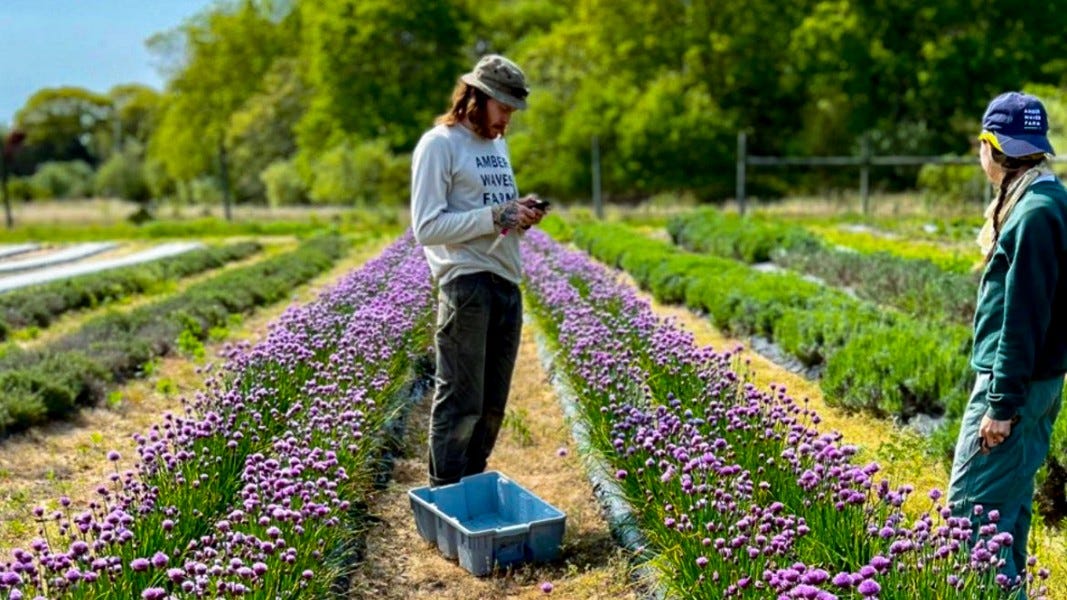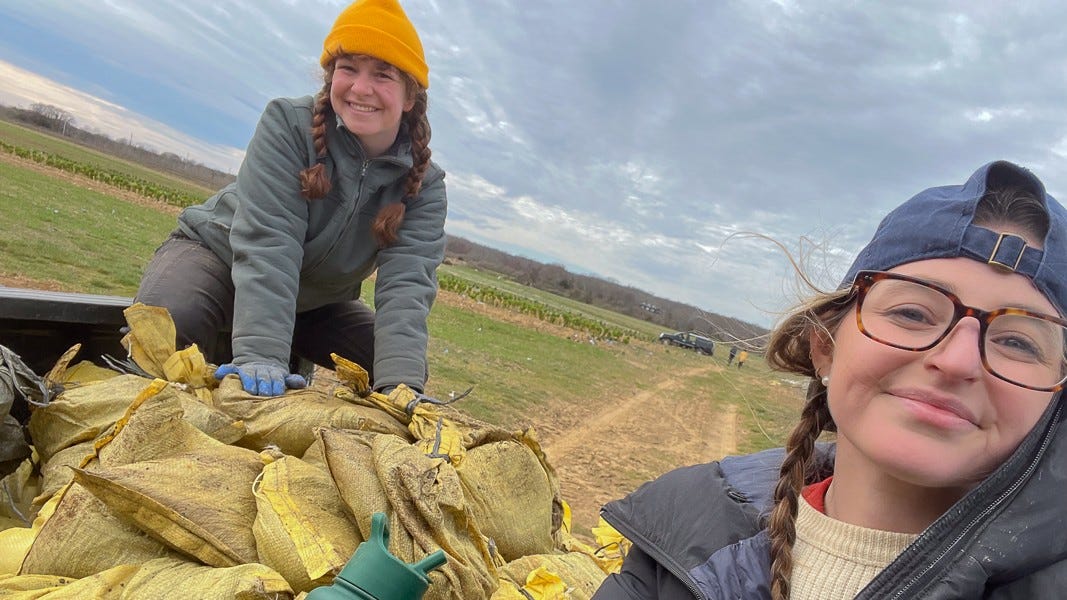Week 23.23 Support Your Growth
Lily has been apprenticing on a farm this summer and has been sharing her learnings. This week she was telling me how they induce flowers and other plants to grow in ways the farmer wants. I had naively thought that a person simply plants seeds and waters them, and then with sunlight and good soil, one can harvest vegetables a few months later. That is far from the way farmers work. They understand the conditions and practices for growth and then deploy techniques that encourage the plants to grow in the way that they want them to. Not surprisingly, the work of the farmers provides great metaphors to help us understand how we too can grow.
Pinching is a pruning method in which the farmer removes the topmost growth of a plant to encourage it to branch out and produce more flowers. Pinching is not cruel or wasteful, but rather a way of shaping the plant’s potential and maximizing its beauty. A good leader does the same with their followers. They remove the distractions and obstacles that hinder their growth, and they guide them to develop their strengths and talents. Like a good farmer, they know when and where to pinch. A good leader does not fear losing their authority or influence by gentle pruning, but rather trusts that their followers will flourish and bloom under their care.
Lily also told about netting, a practice of placing a mesh or a wire near or over the plants to create an illusion of competition and stimulate upward growth. Netting is not deceptive or manipulative, but rather a way of motivating the plants to reach higher and produce more fruits. A good leader does the same with their followers. They create a healthy and positive environment of challenge and reward, and they inspire them to excel and achieve their goals. This practice does not pressure their followers; instead it creates the opportunity and scaffolding for upward growth. A good leader trusts that they will rise and shine on their own merit.
A good farmer knows how to give each plant the room it needs. They do not crowd them together or stifle their individuality, but rather give them enough space and resources to grow their own roots and leaves. They understand that each has their own needs and preferences, and they respect their diversity and autonomy. A good leader does not micromanage or control their followers, but rather supports them and empowers them to reach their full potential. Like the farmer, a good leader can respond to the unique needs of each in their care and they trust that by doing so they will thrive and flourish in their own way.
Founded 15 years ago by two women, Amber Waves is one of the premier educational farm operations in the country. It has grown from a team of two to dozens of farmers, educators, cooks, and market staff. Amber Waves leads engaging workshops and programming for local children and adults. They have an apprenticeship program to train young women in leadership and business skills. Their passion and dedication not only inspire the next generation of farmers but also cultivate a stronger, more resilient community. We can all gain valuable insights from the art of farming - patience, resilience, adaptability, and a deep respect for nature's cycles - qualities that are not just vital for cultivation of land, but also for cultivating growth in the lives of those we love and lead.
Tips for Successfully Managing Hybrid Teams | LinkedIn by Erica Dhawan
A great hybrid manager has a command of both digital 💻 and traditional body language 👍 They understand how value can be destroyed in a hybrid model and mitigate the problem before it happens, and they understand how to create value for their team members first in order to drive value to other key stakeholders later.
As hybrid work leaders and team members, find ways to measure success in results, not hours, set clear norms, roles and expectations, agree on what success looks like, and be available for your team. Further, it’s important to remember that what was implicit in in-person meetings must now be explicit in digital body language. Following these best practices can help you achieve more clarity, and they will also be useful as you refine your team agreements. By setting clear norms for your team can help everyone achieve great results with a great work-life balance and keep employee engagement high and culture strong.
We Need To Stop Hiding Behind Generalities. Here's Why | LinkedIn by Robert Glazer
There’s been an increased prevalence of phrases—in both our society and our workplaces –that assign general sentiment, without any nuance or context. You’ve probably heard several versions of this including “people are saying,” “I keep hearing,” “they’ve been saying,” “the company did X,” “everyone is leaving because of Y,” and other vague or intentionally generalized terms. The truth is that even though organizations often have stated or shared values and goals, an organization does not have a unified brain or a single way of thinking or doing. When an organization makes a decision or takes an action (such as a layoff), that is the sum of the decisions and actions of many different individuals and human beings. It is important to remember the role of these individuals, rather than attributing any beliefs, outcomes or decisions vaguely to the company. The words we use can either empower or disempower us within an organization. Let’s have the courage to stop hiding behind generalizations, unnamed forces and inanimate objects, and recognize our power to create a better outcome.
The invisible roles - Dialogue Review by Sanyin Siang
In my work with chief executives, teams and students, I have noticed a set of vital ‘invisible roles’. These roles are not found on organizational charts and they do not equate to the familiar posts of supervisors, managers, directors, officers and so on. Such jobs are clearly defined, structurally reinforced, and highly visible; invisible roles are the opposite. Often, they are not rewarded, incentivized, or even noticed – yet we keenly feel their absence. These invisible roles can as easily be found in the executive assistant as they are in the chief executive. They are not found in job descriptions, but lie in how a person uses their relational or virtue superpowers. It’s an expression of what’s core to who they are, and what enlivens their work.
It is the contribution made by people – and the invisible roles they play – that are paramount. Such people are needed in every strata and department of our companies. If we can recognize these extraordinary superpowers in individuals, we can learn how to search for their qualities when hiring, promote them in our existing structures, and leverage the best of what our companies have to offer.
With love, gratitude, and wonder
-Scott













